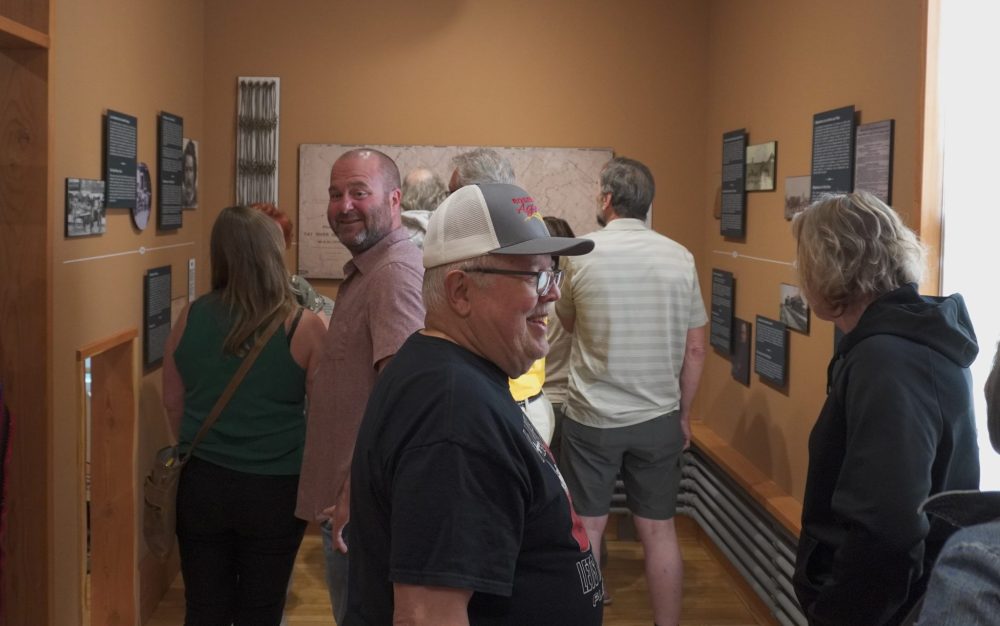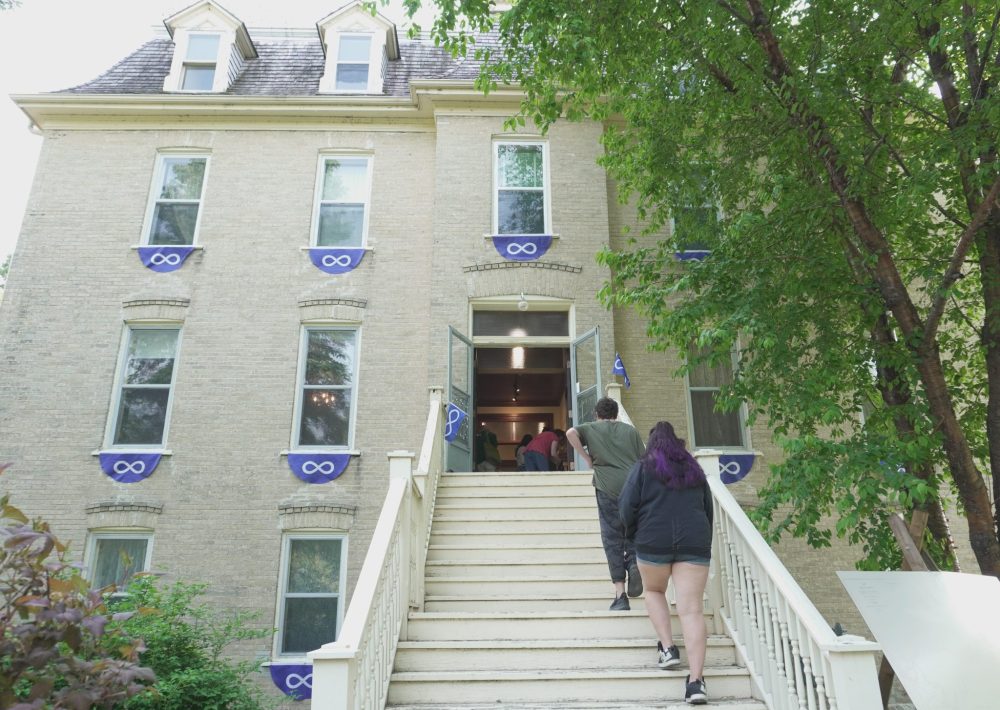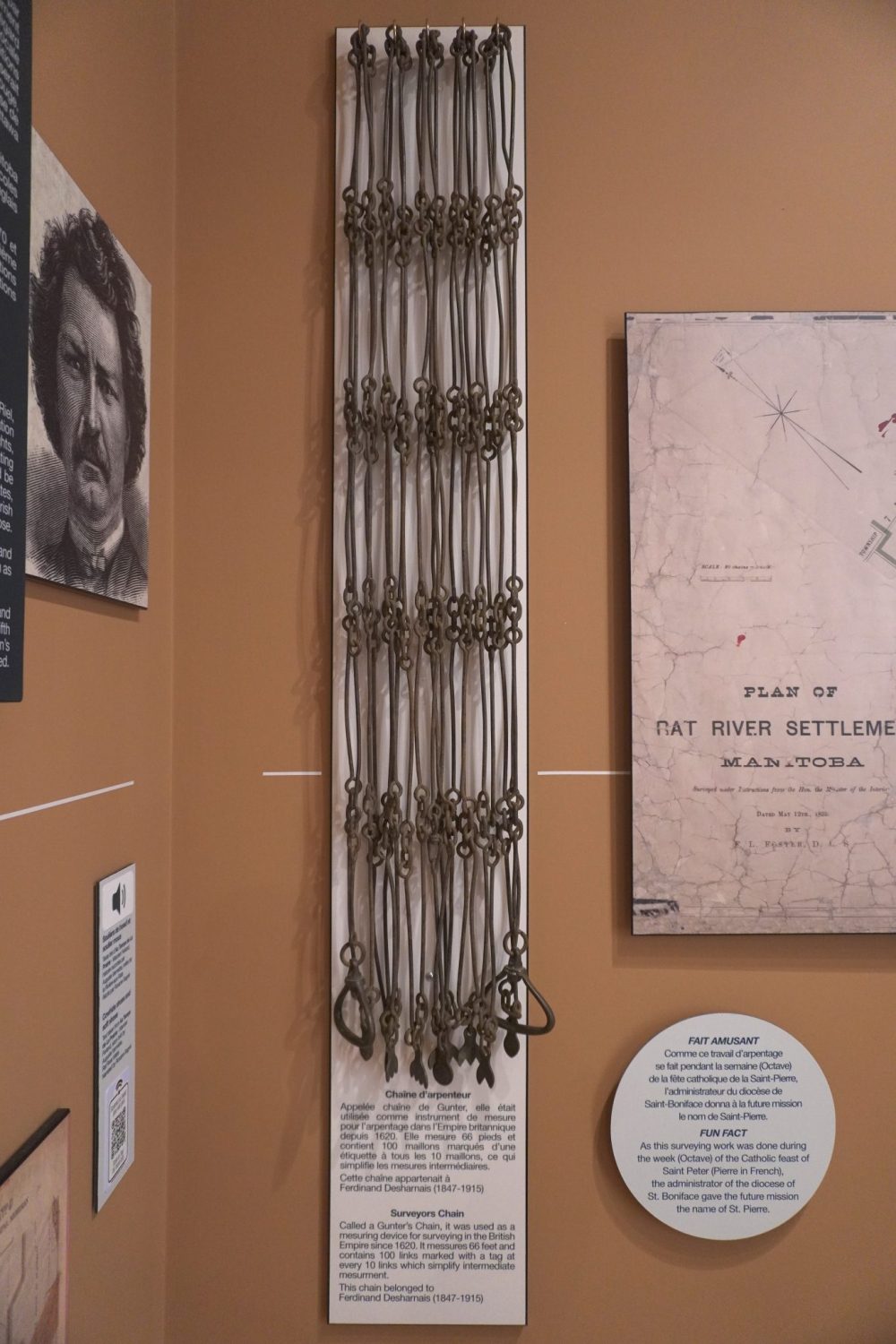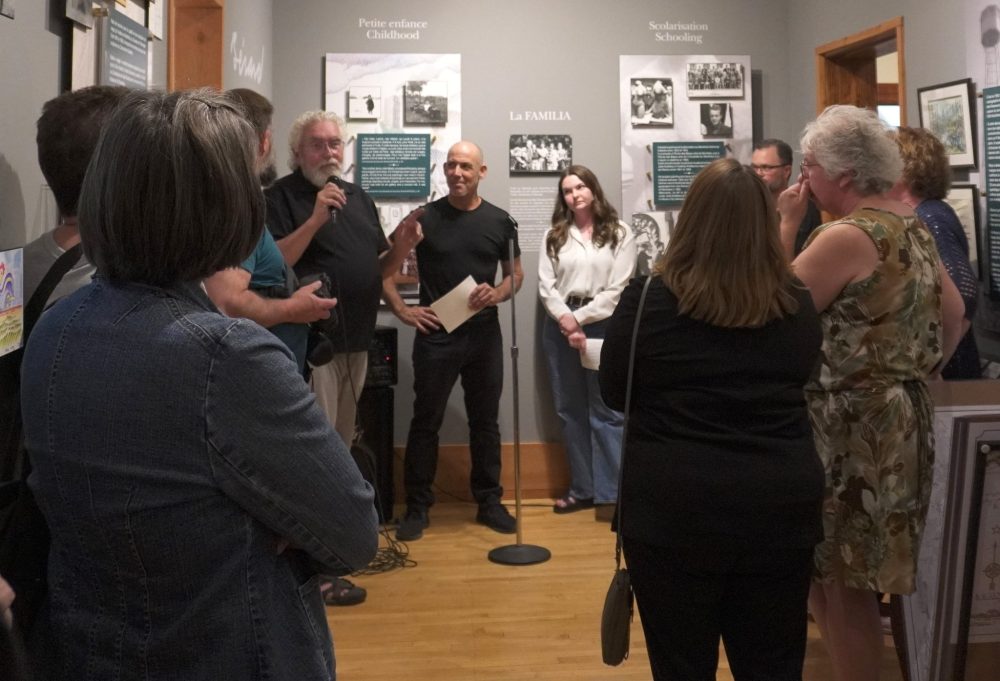New exhibit at St Pierre Museum showcases early Métis roots
Advertisement
A new exhibit at St Pierre Jolys Museum tells the story of the first inhabitants of Rat River, the Métis peoples, from 1730 to 1878.
“It’s our history… To be able to tell our stories is very important and celebrating the Métis heritage which for many years has been persecuted. We can also recognize the hardships but also celebrate the people today,” said Sol Desharnais, exhibit curator at the June 5 opening.
Desharnais spent a year and a half researching for the exhibit, including a total of a week in the Manitoba Archives.
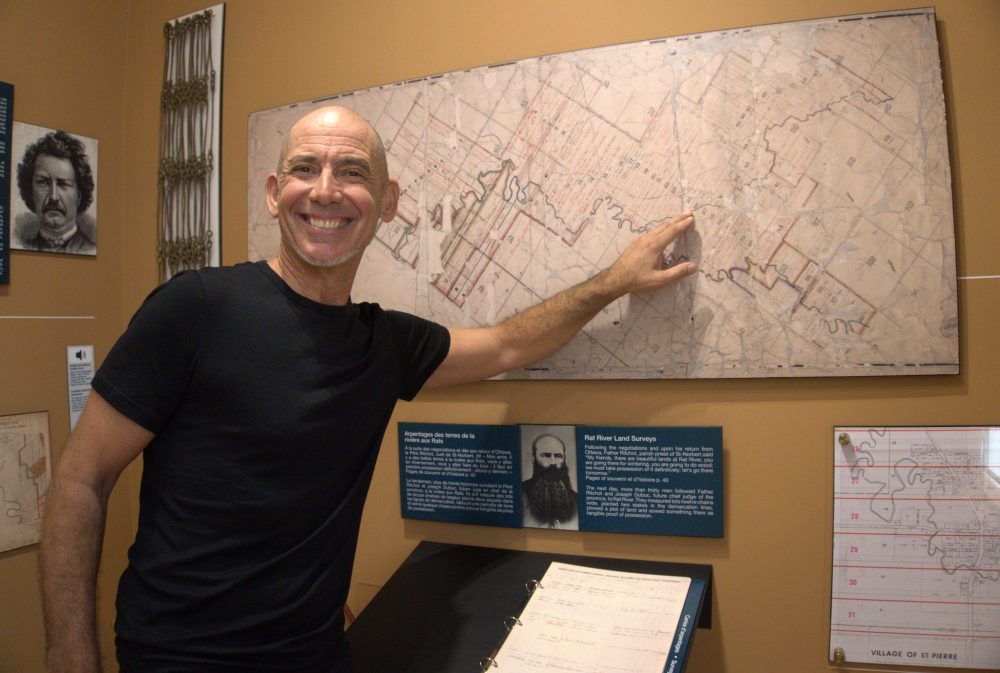
There he found a map of the early Rat River settlement drawn in 1858 showing trading routes from St Vital and St Boniface area in Winnipeg to St Paul, Minnesota where a train connected to other places like Chicago and New York.
“It’s a story which is now easier to tell,” said Desharnais.
The museum has enlarged and made the map more accessible for visitors.
Rolly Gagné, the museum’s president, said they plan to put the map under a canopy near the entrance of the museum so people can still study it when the museum is closed.
To mark its opening, people from the community removed a Métis sash from each entrance into the exhibit.
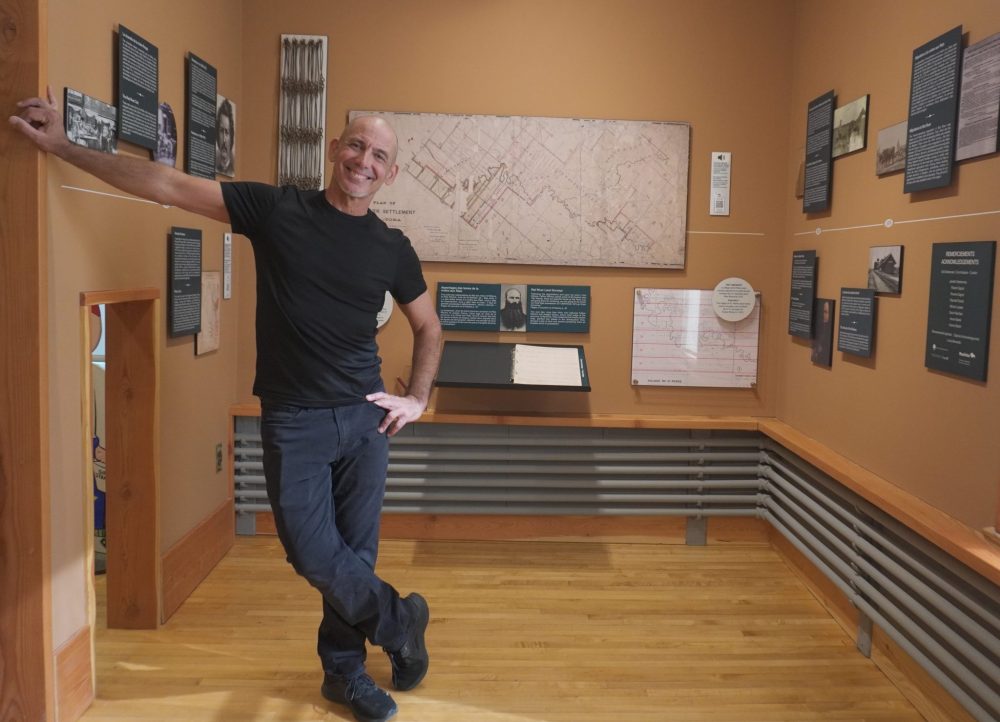
Julie Fillion played the violin as guests wandered around the packed exhibit with around 120 people coming and going.
“It’s definitely important for the new Métis growth of the community. St Pierre was a hidden Métis community,” said Gagné. “It’s to give pride back to those families.”
The museum also had a map outlining many lots along the Rat River, and one of them belonged to Gagné’s family.
He said his ancestor’s lot is in the map and they had the property until about 15 to 20 years ago when it was sold to someone outside the family.
“I’m so proud of our community and our museum of what we’ve been able to accomplish with the amount of money that we have. As most museums are closed or they don’t have enough money to operate,” he said. “It’s to realize that we live in a beautiful country. We live in a beautiful area.”
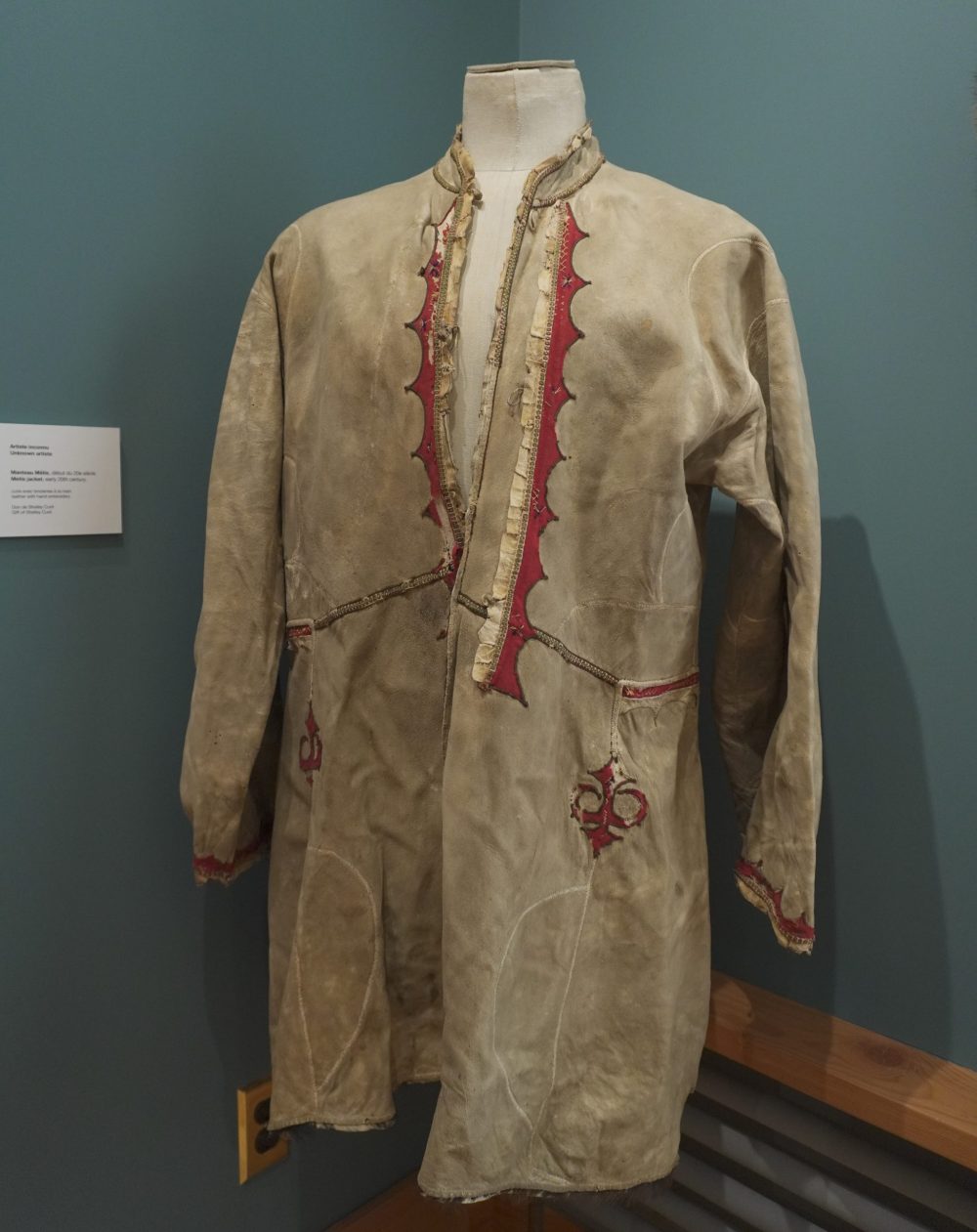
The bilingual exhibit includes French and English, including audio stories with local tales of drinking the Rat River’s water and bison hunts.
The museum is also showcasing local Métis artists for the summer, featuring beadwork, clothing, and woodworking art.

